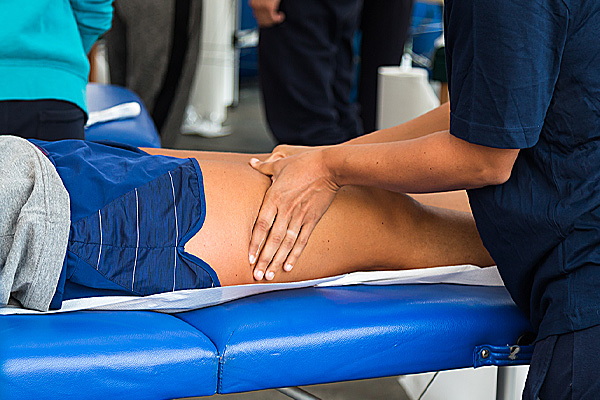By Allissa Haines
One of my favorite things about being a massage therapist is that the job can take you anywhere. We do massage in pediatric oncology units, corporate offices, spas, private practice. I even used to have an annual chair massage gig on the floor of a factory. Really, it was a massive facility with machinery the size of a bus weaving cable together, complete with workers in blue jumpsuits with their names stitched to a patch on their chest.
As environments change, so does our equipment, marketing materials, elevator pitch, and even style of massage. What doesn’t change? The foundations of professionalism, customer service, connection, and delivering the best possible massage to that client in that moment.
Environments Change, Customer Care Does Not
The most bare-bones basics are standard. Have a clean and professional appearance. Bring all the equipment and supplies you need to maintain an impeccably clean environment and create a great massage space suited to the event. Your setup will vary depending on the event. Massaging under a tent at the end of a 10K race will look very different from your booth at a bridal expo.
What shouldn’t change is the approach to hospitality and client care. Every environment, every client is worthy of conscientious and thoughtful care. On-site and chair massage events are often a person’s first exposure to massage therapy. We should strive to provide a positive and memorable experience.
Here are 10 basics to keep in mind, no matter where the massage is delivered.
1. Everyone deserves a warm and clear welcome. It sounds so cheesy, but a smiling, “Hi, I’m Allissa. I’ll be your massage therapist today,” is a perfect start. The client may automatically offer their name, but if not, just ask.
2. Intake matters in every environment, and it can be efficient and thorough at the same time. Ask the client if they have had chair massage before, if they would like attention to any specific issues, and if there are any health issues you should know about to proceed safely.
3. Be sure to ask permission if you plan to use any product on the client and if it’s OK to massage the scalp. It’ll be hard to enjoy the massage if the client is worried about their hair looking ridiculous at their meeting in 30 minutes.
4. Provide instructions and demonstrate how to get into your massage chair (or onto your table if you are going that route). Show how the chair can be adjusted and check in about comfort as the client positions themselves.
5. Focus on the client. On-site massage can feel rushed, especially when there is a line of people waiting or a strict list or schedule to consider. But we never want the client to feel rushed. The client should feel like the center of the universe for their time in your care.
6. Be sure to start with still, measured contact. Take a slow, deep breath before you start to move your hands. This will do wonders for your own nervous system and model calm for the client. This moment is a great time to internally remind yourself of the client’s name and what they want prioritized in the session.
7. Address their primary issue, if there is one, and check in with a “do you feel like I’m getting to the right spots?” Keen attention to the body’s response to your massage will help you know when to ask about pressure.
8. Try to avoid asking “How’s the pressure?” which will almost always receive a response of “fine!” from the client. Instead, I like to ask, “How do you feel about this pressure, would you like a little more or less?” That more specific question tends to get a more honest response to guide your massage.
9. Don’t disappear. Not every massage therapist offers a “keep one hand on the client at all times” type of massage, and that’s OK. At the same time, you don’t want a client wondering where you are or where you went. Do your best to maintain contact as you move around the chair; keep everything you need during a massage within reach. If you do need to step away, simply let the client know what you are doing.
10. Privacy is imperative in every massage interaction, even in more casual massage environments. Bob in Accounting does not need to know that Joan in Sales has the tightest shoulders in the whole office. At big events, try to place your body between the crowd and the client when asking intake questions and keep any needed conversation as quiet as the space allows.
Every event, every environment is an opportunity to be a professional and an ambassador for massage as a whole field. And building a reputation for professionalism can help you attract more clients, retain existing ones, and grow your business in the long run.
author bio
Allissa Haines is a practicing massage therapist and columnist for Massage & Bodywork magazine. You can read her column, “Blueprint for Success,” in the digital edition at massageandbodyworkdigital.com.
